This is the 19th in a series of posts on the Sony a9. The series starts here.
Yesterday, I reported some preliminary dc current drains for the a9 in several modes. Today I’m going to look at current draw as a function of time. When I did similar tests with the a7RII about six months ago, I found that you could learn quite a lot about the internal operation of the camera this way.
First let’s look at the current when the LCD display is showing the image that’s about to be captured:
We are looking at the voltage across the Keithley DMM that made the reading I showed you yesterday. That meter is in current mode and set to the 1 ampere range, which means that its nominal resistance is 0.1 ohm. Either that is optimism on Tek’s part, or we’ve got some considerabe resistance in the GR plugs that connect the fixture to the DMM and the scope. We know from yesterday’s post that the dc current in this mode is about 375 ma. So we’re looking at about 200 ma per division here, or 1.6 a full scale. So, you can see there’s a bit more than 300 ma minimum draw, with spikes to about twice that as the camera reads the sensor and refreshes the display. With the horizontal sweep set to 10 ms/division, we can see that the LCD display is being refreshed about every 4 division, or every 40 ms. So the refresh rate is about 25 fps, or a hair faster than a standard 35 mm motion picture projector.
If you put your eye — or, in this case, your finger — to the EVF, the scan rate goes up, and so does the dc current:
Now the refresh rate is about 100 frames/second. That’s four times as fast. At this point, the camera had a manual focus lens and was set to MF mode, so there is no autofocusing affecting the refresh rate.
If we turn AF on, we can see how it affects the way the sensor is scanned:
The scan rate for AF appears to be twice the rate for EVF refresh only. Twelve samples in 50 ms above works out to 240 samples/second. I’ve always wondered just how fast the a9 scans the sensor during AF. Looks like that’s the answer.
The above scope shot was done with the LCD display active. The AF system isis in continuous mode. At the left side, it has acquired focus and is tracking. When I took my finger off the shutter release, it dropped from 100 Hz refresh down to 25 Hz. It was also done with the 120 macro and OSS was switched on. You can see the slower dc variations superimposed on the focusing sampling on the left side of the screen above.
Now we’ll look at how in-body image stabilization (IBIS) affects the current draw. The way that IBIS works in the a9 and tha a7x cameras is that it’s never really off. There is no mechanical lock for the sensor, so when you turn IBIS off, all the electronics and motors keep working, but instead of trying to move the sensor, they’re doing their level best to keep the darned thing in one place. The current effect of that is about the same if you’re moving the camera around. In the screen shot below I left IBIS off and shook the camera up and down fairly vigorously in the middle part of the trace:
You can see that, like in the a7RII, IBIS is not a big contributor to camera current draw. In the above shot, I changed the time base to one second per division, or ten seconds for one full trace.
Here’s a look at the autofocus system acquiring focus in AF-S mode.
The LCD is active at the left. Putting the eye (or finger) to the finder causes the scan rate to go up. Then the scan rate drops as the camera drives the focus motor. When focus is acquired, the scan rate increases again, but the dc current drops.
Now let’s take some pictures. I put the camera back into MF mode, set the drive the single shot, turned on the EFCS and made one 1/1000 second exposure:
You can see the shutter going off, and drawing more and an amp briefly (I was surprised by the current draw, and had the vertical sensitivity set to 1 amp full scale for this picture. I fixed that below). After the exposure, the camera thinks for a short while, then the current goes up as it writes the image to the SD card. Then there’s about two seconds (the horizontal axis is 1/2 second per division) where there’s elevated current draw. The camera is doing something, but I don’t know what. Then the current goes back to its rest state.
If we take a shot with the electronic shutter, it looks like this:
Pretty much the same thing, except the current draw by the shutter is less, as you’d expect. Why is there a big spike at all? At this point, I don’t know.
Here are some EFCS exposures with the drive set to CL:
And CH with the electronic shutter:
That’s the highest dc current state that I’ve found. The peak current is over an amp. The average doesn’t look as high as the valuse that I measured yesterday; I’ll have to look into that.
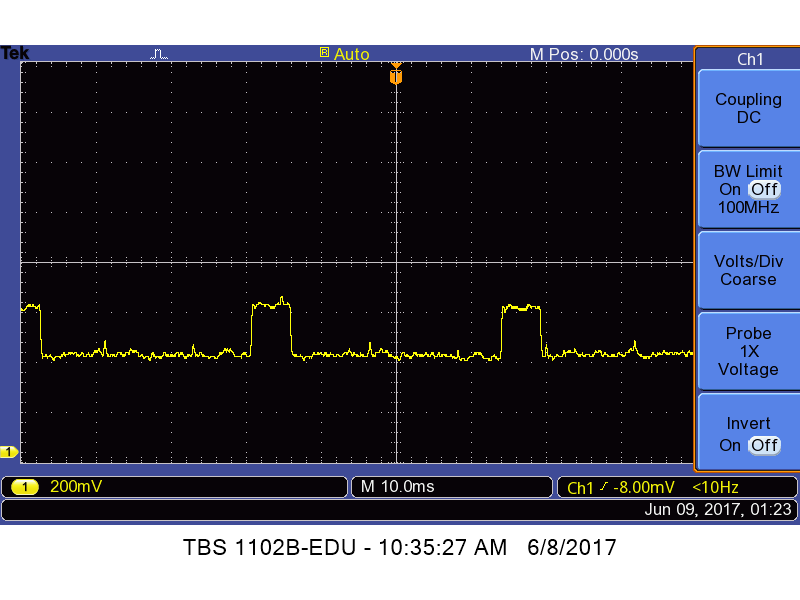
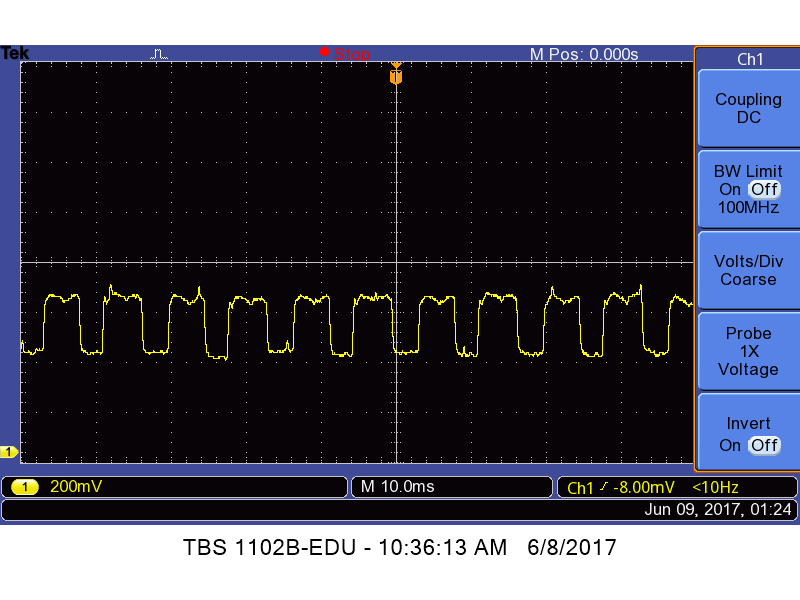
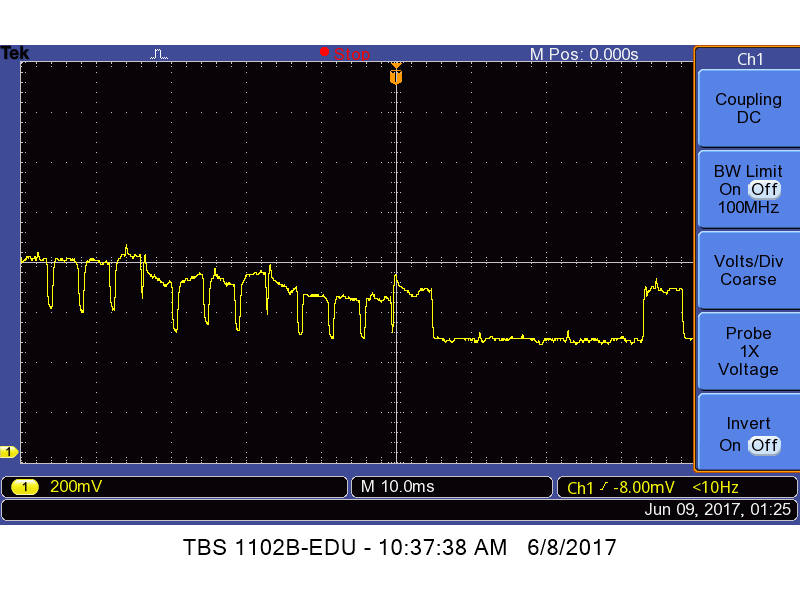
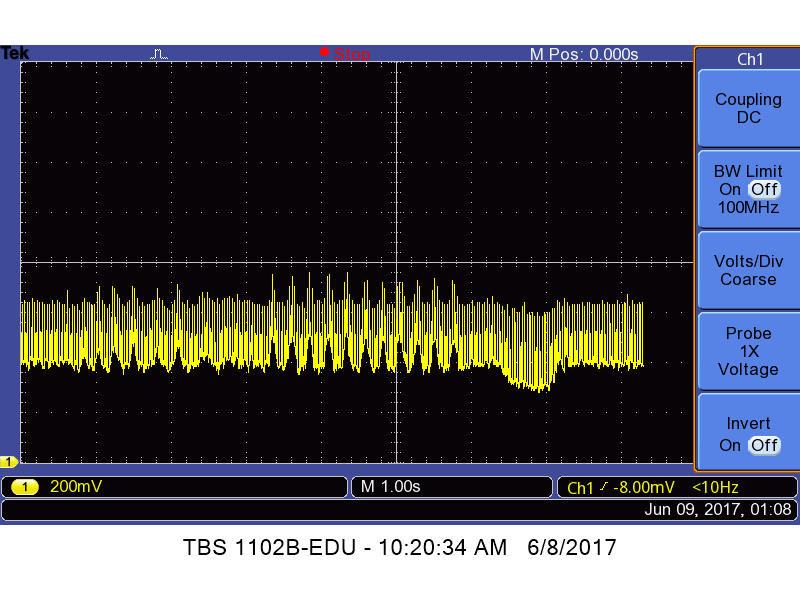

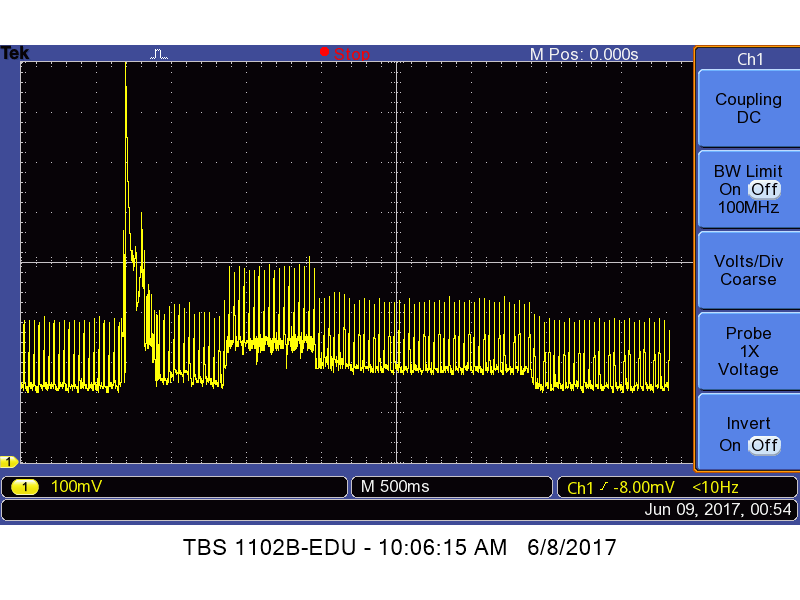
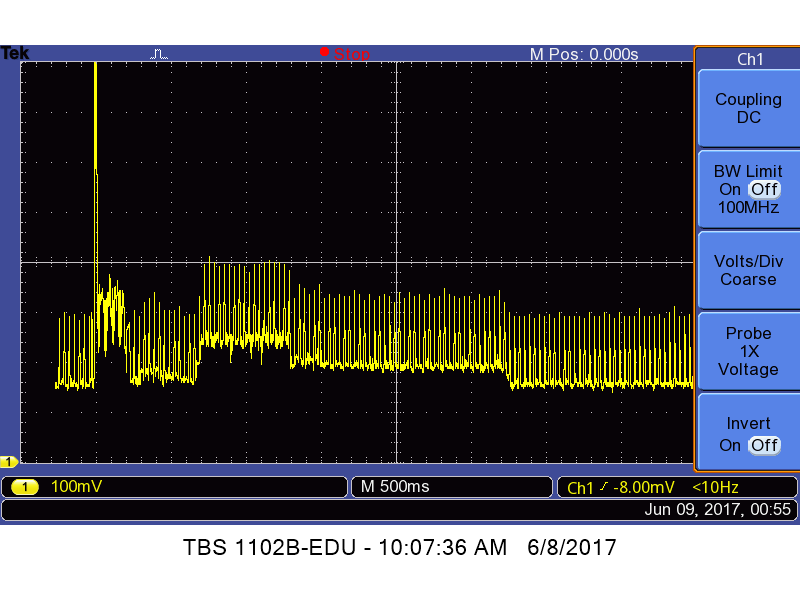
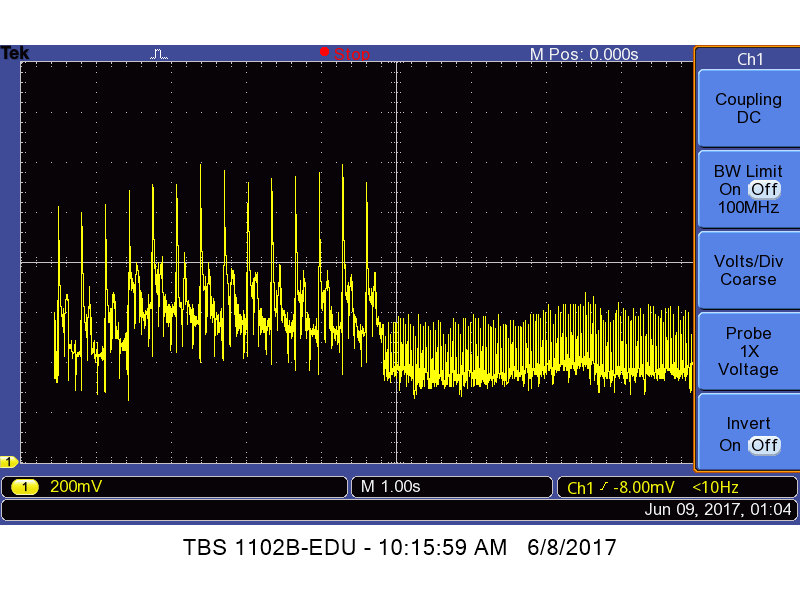
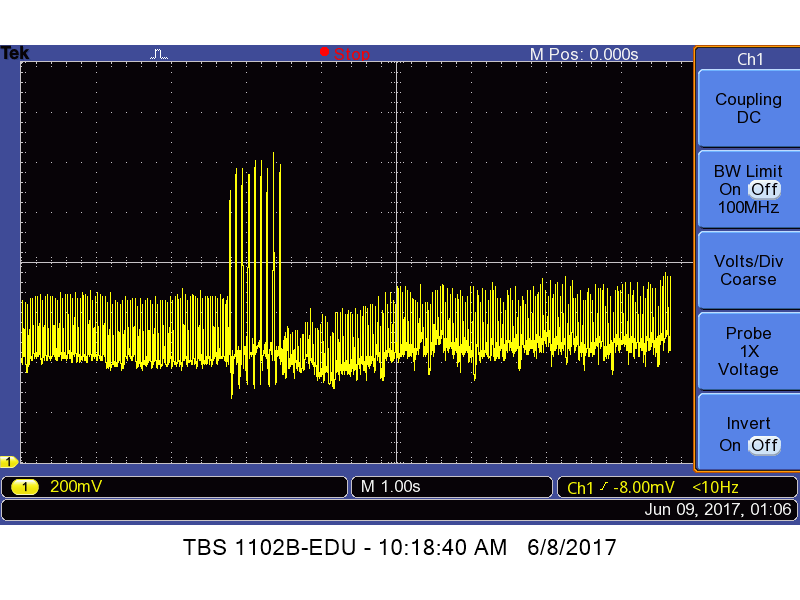
[…] The Last Word – Sony a9 dynamic battery draw […]